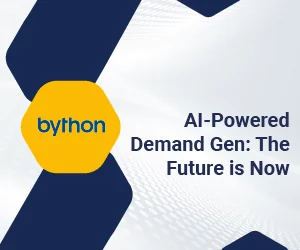Guest Contribution by Ross Swan
Change is really about the notion or idea of impermanence of things—Buddha.
Change invites reflection to review where we are and who we are. It invites us to drop deeper and see our inner selves and what we are not comfortable with changing.
As individuals, we are resistant to change. It helps to know or find out what’s underneath that resistance, as in where the resistance is coming from.
For leaders, it about their comfort zone and change when they are looking at change management processes or initiatives. People like their comfort zones. Simply because one is in control of nearly every contingency. Moving out of that makes one feel there are challenges. That leads to the ‘why do I have to change’ resistance.
One way to go about it is not to mention the word change and focus on the destination and the behaviours that get you there.
How do you do this when initiating or managing a change process?
There are 4 key questions that leaders need to answer with clarity:
- Where do we want to go?
- Where are we now?
- What part do I play?
- What’s in it for me?
Giving answers to these four questions guarantees that the rest of the organization moves with the desired change management process. In fact, answering these four questions makes the entire change process much easier for those with resistance to accept and make the necessary move.
The best analogy is to take that of moving to a new house.
So first we are going to go from here, where we are now, to that house there. Move from point A to point B. The move is because the house, in point B is, say bigger or nicer and each family member gets their own room. That answers what’s in it for me. Individually, as an involved family member, my role is to pack and clean up the rooms and things under my responsibility and move them to the new house. But be ready for some to still have resistance and who would not want to leave.
In this example, you would note that through the entire process at no point in time did anyone in the family suddenly just say “oh! We’re going to change!”
For leaders, it’s no different. They need to sell the idea of change without using the word change. By using the word change one creates resistance.
On the other hand, by explaining the benefits of change, especially through the what’s in it for my bit and where the organization is headed, it makes it easier to get people on board.
This ability to communicate is impacted by the way leaders are affected by the environment they are in. It shapes their personality from what they feel is the expectation the company, the executives and the environment have from them. A sort of conditioning in terms of leadership behaviour seems to be present which suits the leaders.
Now when this behaviour changes it, initially, creates friction because the current state has changed, and new behaviour is being demonstrated. This friction is pushback.
It occurs on two counts:
- The first person’s usual behaviour has been replaced with a new behaviour. Therefore, a new stimulus to react to.
- The what’s in it for me needs to be clearly visible.
When the changed behaviour is in play and all other dynamics are running on the old or previous conditioning and the new behaviour is not the expected behaviour it creates the friction.
For leaders it’s critical that they explain the change, that is taking place or is being spoken about, with clarity. Leaders need to be able to tell their executives why the change is happening and what exactly they are trying to do.
Let me share an example from my corporate life. This is many decades ago when empowerment wasn’t even spoken about. My PA was highly efficient and military like and used to run the building as we had rented the whole building and had sub-tenants. So, when there were issues, she would come in ask what should we do here, and I used to tell her up to a point. Then I realised I’ve got to empower her and so I started saying what do you think we should do? And she’d suggest and then go ahead and do it. She started realising the change that was taking place as she was the one suggesting and actioning the solutions she had suggested. Taking this one to other staff slowly a gradual change started to occur in the behaviours. The managers all went off on a tangent thinking that I’m leaving, and everyone was talking behind my back about where I’m going.
The learning from this is that without clarity of the change objective there would either be resistance or deviations as people would tend to make their own assumptions.
As leaders its critical to share what you are doing and why. Simply because then you have your people share the journey with you by taking away the resistance through the clarity of knowing why that change is happening and how it benefits them.
***
Ross Swan is a perceptive, responsive, and accessible consultant, coach and trainer, with broad experience in varied industries worldwide, including financial services, construction, energy, logistics, distribution, retail, engineering, hospitality, airlines, and manufacturing. He is highly regarded for his proactive methods to capture and integrate employees’ engagement with the corporate vision.
Ross is also a dynamic speaker with outstanding skills in leadership, communication, presentation, training, team-building, and interpersonal relations. He works internationally, spanning a variety of industries around the globe with his projects encompassing a large diversity of cultural backgrounds.







